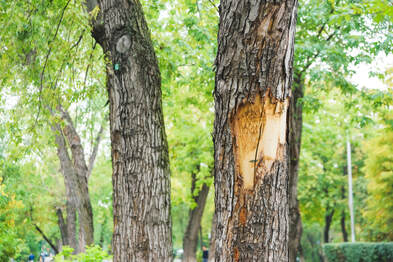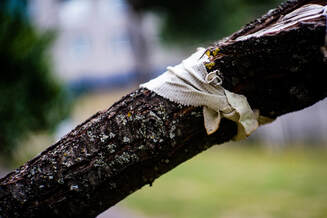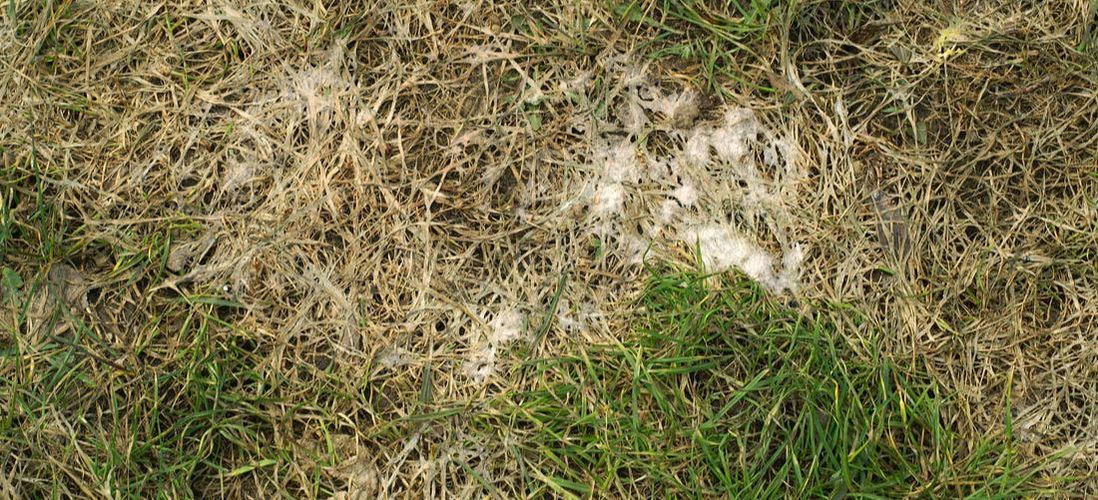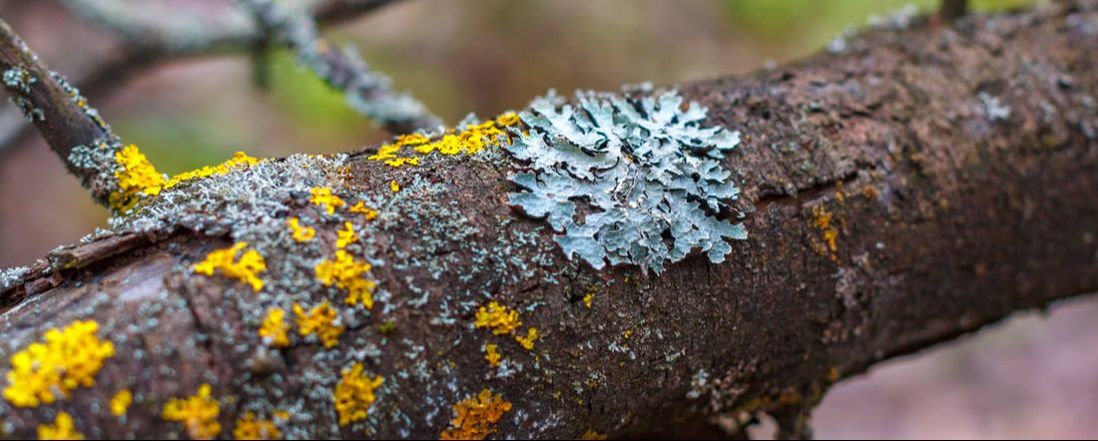 If your tree is missing hunks of bark, it doesn’t look so good. Is something’s wrong? If you see peeling bark on your tree, help your tree by realizing what’s going on and learning the specifics regarding peeling bark and what to do about it. My tree is losing bark? Why? It’s typical for a tree to lose bark. For some types such as silver maple, birch, and sycamore, shedding big hunks of bark is appealing and natural for the tree. Other trees, including pine, maple, ash, and oak develop from the inside out, so the older bark drops off to make room for the newer bark. If there’s healthy bark beneath the peeling layers, your tree is fine. But if you see any adverse signs, your tree requires some help. Schedule an appointment with an arborist. Reasons bark falls off Bark comes off after frost, which usually occurs on the tree’s southwest or south side. Any sharp swing in temperature can cause trees to crack under stress and shed bark. Bark comes off after extreme heat, which strips bark down to the wood. Bark comes off a damaging tree, which means you’d view other indications of stress like dead leaves and twigs, cankers, or sap. Is my tree dying when the bark falls off? There’s no one answer to this question. If the tree seems healthy, there’s a chance it’s just peeling for growing. If your tree lost bark after adverse weather, you should contact a tree specialist for an examination to make sure that no serious harm was done. What to do about pine, ash, maple, and oak tree bark falling off If the bark is peeling with no additional symptoms, it’s likely due to weather stress. Stressed trees love mulch and water. So, apply organic mulch in fall and spring. Water the tree when its soil is dry. If you find any hints of disease or pest, oozing cankers, fuzzy fungus, or dead leaves, contact a Syracuse arborist check it out. They’ll tell you if the problem can be treated or if you need to remove the tree to protect the grass and other trees and shrubs in your outdoor space.  Frost cracks come in late winter to early spring usually on the southwest side of a tree at the site of a branch stub or earlier wound. They happen when the day’s sun heats the underlying wood and bark, creating tissue expansion. Then with a sharp, sudden temperature falls, the outer bark layer contracts, faster than the inner layers. The difference in contraction is mainly severe where there is a damaged area. Tissue in the wound site doesn’t contract as promptly as good wood. The cambium in the wound area has created a different tissue, a barrier zone that has an unlikely chemical and anatomical makeup from ordinary wood. This space becomes an area of structural weakness and when strained by quick temperature change the wood splits along the barrier zone. The strain between the healthy and defective wood leads to the damage. The splitting itself can explode like a rifle shot. The area involved indicates a vertical crack or bulge in the trunk. The space may harden over only to open again in the upcoming wintertime. The area can also let in disease organisms and insects. Vulnerable species are sycamore, ash, tulip tree, apple, maple, crabapple, beech, and horse chestnut. Pest Management Strategies to Use Treat trees fine. Avoid trunk wounds! They can come from mowing, incorrect pruning, and weed whipping. Do not use tar or wound paints on the crack. They disturb the healing. Prune accurately. Offer a clean wound area. If the break is clean with tidy edges and no dangling, loose bark, don’t mess with the trunk. It will heal on its own. If there is a raggedy tear with peeling bark, cut off the affected bark. Then cut around the wound with a sterile, sharp knife. This cut encourages speedy healing and cambium growth. A half inch of bark around the injury could be detached to give create a clean edge. The edges will harden and ultimately close over the wound. Severe damage. If there is a seriously large crack, an arborist can do some bolting to save the tree. Snow mold is a cold-weather fungus that affects cool-season grasses. Learn what is snow mold and what you can do about fixing and preventing it. What Is Snow Mold? Most indicators of spring are the good ones, like bloom, warmer temps, green grass, and buds. But gray-colored circles on your grass? Not hardly. Snow mold is due to cold-weather fungi that typically affects cool-season grasses. Signs of an issue aren’t seen until the spring when the snow melts. Signs of Snow Mold Symptoms of both gray and pink snow mold are typically most noticeable in the spring when the snow starts to melt. As the snow melts, circular patches varying in size from a couple of inches to several feet appear in your lawn. The grass in these patches is generally crusty and matted down. The spots will have a white-grayish look if they are due to gray snow mold or a pink-whitish look when due to pink snow mold. Pink snow mold can be more hazardous than gray snow mold since it kills the roots and crown of grass plants. Gray snow only affect grass blades. How to Treat Snow Mold The key to fighting snow mold is prevention. There aren’t any treatments that work on snow mold when the snow melts in the spring. If you have repeated problems with snow mold in the springtime, you can use a preventative application of fungicide in fall before the first heavy snowfall. If you don't use a preventative fungicide in fall and you see snow mold damage in your yard, the first thing you should do is gently rake the affected spots to loosen the matted grass. This will aid the lawn in drying and giving unaffected grass space to grow. You can also reach out to a tree specialist to inspect your outdoor area. Once you’ve got your lawn back in order, it’s critical to maintain it in a way that deters snow mold in the winter. Keep mowing your grass until the growth has stopped altogether. Tall canopies make snow mold worse. Lastly, you should dethatch your lawn around late fall to eliminate as much build-up as possible before the snow begins. Tree lichens appear on numerous trees. They are considered an aggravating pest or a fortunate blessing. Lichens on trees are harmless and unique. Some, however, deem them to being unappealing. Let’s talk about what it means to have lichen on your tree bark means and what remedies are available to you. What are Tree Lichens? Lichens on trees are a distinct organism because they are a marriage between algae and fungus. The fungus grows on a tree and collects moisture, which the algae desire. The algae, in return, create food from the sun’s energy which feeds the fungus. Lichen on trees is harmless to the tree. The rhizines (think tree roots) lets them attach, but don’t go deep enough to damage the tree in any way. Many folks feel that when a tree gets ill from having lichen, that the tree lichens are the reason for the illness. This isn’t possible. The lichen was most likely there long before your tree became ill. While lichen on trees is harmless, some folks feel they aren’t pretty to look at and want to kill them. One way to get rid of lichen is to scrub the tree bark with a soapy solution. Lichen is lightly attached, so it comes off quickly. Don’t rub too hard. You can end up damaging the tree, making it susceptible to insects and disease. Another technique for killing tree lichen is to spray the tree with copper-sulfate. Copper-sulfate applied on lichens on trees will destroy the fungus. You should use copper-sulfate as a remedy for tree lichen in early fall through late spring. This solution doesn’t work in cold weather. Another chemical to use is lime sulfur. Also, lime sulfur is used to kill the fungus that is part of a lichen. Be sure that the lime sulfur is not put on the leaves and roots. This will damage the tree. Do you have lichen on your trees? If you have it or believe you might, this is the time to contact a Syracuse arborist to find out. Once your tree has been diagnosed, you’ll get some practical solutions to remedy the problem. |
AuthorWe at Syracuse Tree Service want to help you with your tree service needs, our blog is where we provide helpful tips and ideas for the health of your trees. Archives
December 2020
Categories
All
|
- Home
- Services
- About
- Contact
-
Service Locations
- Liverpool Tree Service
- North Syracuse Tree Service
- Cicero Tree Service
- Baldwinsville Tree Service
- Manlius Tree Service
- Weedsport Tree Service
- Clay Tree Service
- Bridgeport Tree Service
- Lafayette Tree Service
- Fayetteville Tree Service
- Chittenango Tree Service
- Camillus Tree Service
- Onondaga Tree Service
- East Syracuse Tree Service
- Blog
|
Home | Services | About Us | Contact Us
Liverpool | North Syracuse | Cicero | Baldwinsville | Manilus | Weedsport | Clay | Bridgeport | Lafayette | Fayetteville | Chittenango | Camillus | Onondaga | East Syracuse © Syracuse Tree Care 2017
Syracuse Tree Care 4736 Onondaga Blvd Suite 112 Syracuse, NY 13219 (315) 692-0186 |
|



 RSS Feed
RSS Feed